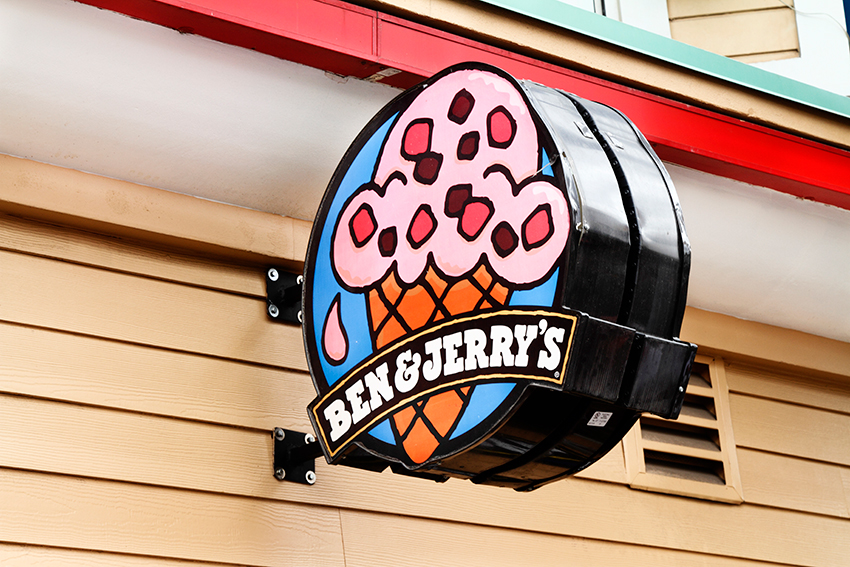
Peace, love and ice-cream: Ben and Jerry’s tone of voice
Two weeks ago I, a pun-loving copywriter, was given an unbeatable opportunity to attend an industry-leading (and pun-tastic) copywriting conference in Bournemouth.
Copy Cabana is the self-proclaimed ‘hottest copywriting event around’ where myself, and over 200 other copywriters, were treated to talks from a stellar line-up of 13 incredible speakers. From award-winning advertising to Roald Dahl book blurbs, wine writing, poetry, and so much more, it was one day packed full of years worth of knowledge.
One of my favourite talks of the day was from Kerry Thorpe, Communications Lead at Ben and Jerry’s Europe. Now, I could talk till the cows come home about the insanely inspiring story behind the business, as well as its weird and wonderful office culture (like me, I bet you don’t have fake grass and a picket fence around your desk!).
But instead, let’s give it up for their tone of voice.
It’s many things. It’s authentic. Genuine. Inclusive. Youthfully optimistic. Adventurous.
And, my favourite? Humble.
Ben and Jerry first met when they were two kids in gym class who hated exercise but loved ice-cream. They constantly remind all their staff of this, which helps maintain those genuine and friendly brand values.
Ain’t no Ben and Jerry’s copywriter going to get too big for their scoops (sorry, I couldn’t help myself).
Kerry explained how ice cream is a highly emotional product, so it’s vital to use the tone of voice in the copy to create a sense of excitement for the customer.
Yes, you could talk about ‘pieces’ of chocolate chip cookie dough, but, be honest, how much better does this sound:
“Vanilla ice cream with gobs of chocolate chip cookie dough.”
Gobs. Not ‘pieces.’ Gobs. It suggests indulgence. Endless chunks of cookie dough that you can’t help but imagine eating. It creates the all-important emotional engagement.
Here’s a line used for their non-dairy range:
“It’s Ben & Jerry’s but without the cow, set to arrive on spoons this September.”
Kerry talked about how dairy-free options always feel like they’re lacking, so Ben and Jerry’s wanted to emphasize that with their range, you’re getting exactly the same amazing product, just – as they put it – ‘without the cow’.
Then there’s the spoons. The copy said set to arrive ‘on spoons’ as opposed to ‘shelves,’ because spoons creates the sense of immediacy. You’re not imagining yourself going to buy the ice-cream. You’re fantasising about the moment when the ice-cream is right in front of you, about to be eaten.
It’s no good just settling for words like ‘tasty’ or ‘delicious’ either. Not when you can engage the senses with lip-smackingly good words like taste-tingling and scrumptious.
But of course, the business’ copywriting is used for much more than simply describing flavours. Did you know? Ben and Jerry’s is a strong supporter of same sex marriage, and it recently used the power of puns and wicked wordplay to run a campaign that supported marriage equality in Ireland.
In line with the campaign, they temporarily renamed one of their flavours as ‘Engagemint Party’ to stand up for gay marriage.
In Australia, where same sex marriage has also not been legalised, they took this one step further. Ben and Jerry’s went as far as banning its scoop shops from selling same-flavour double scoops – saying, ‘love comes in all flavours.’
Proof that something seemingly as simple as ice cream (and the clever copywriting behind it, of course) can start a conversation and drive social change.
Not bad for ‘two guys from gym class,’ don’t you think?